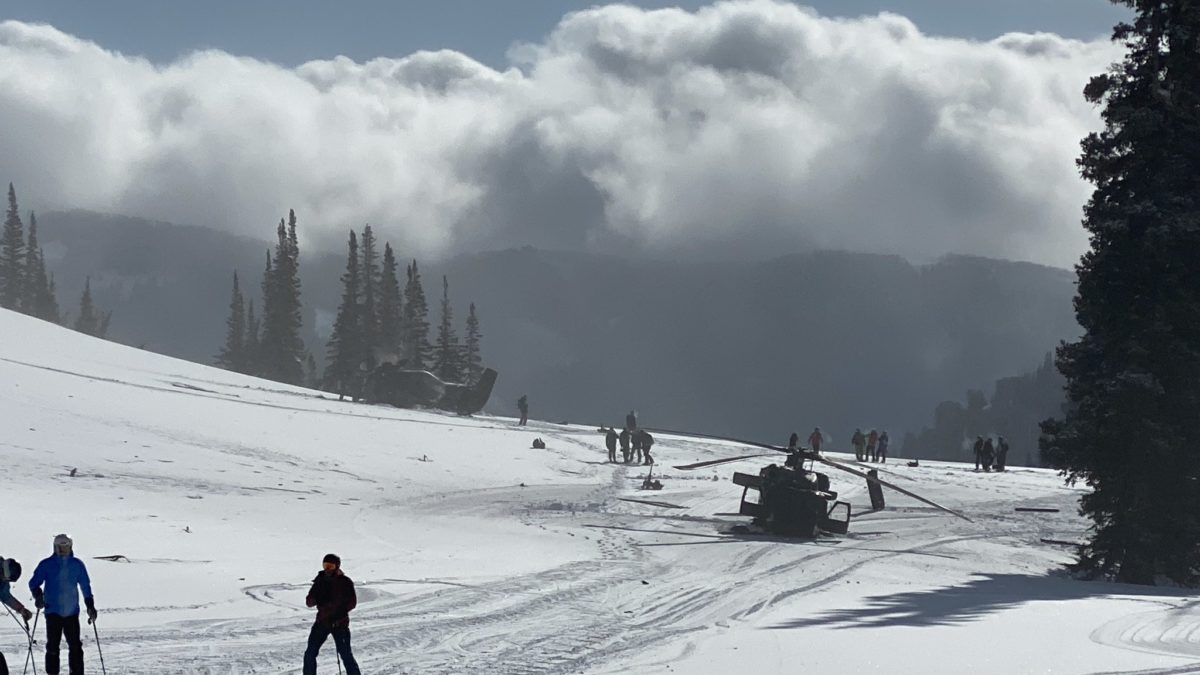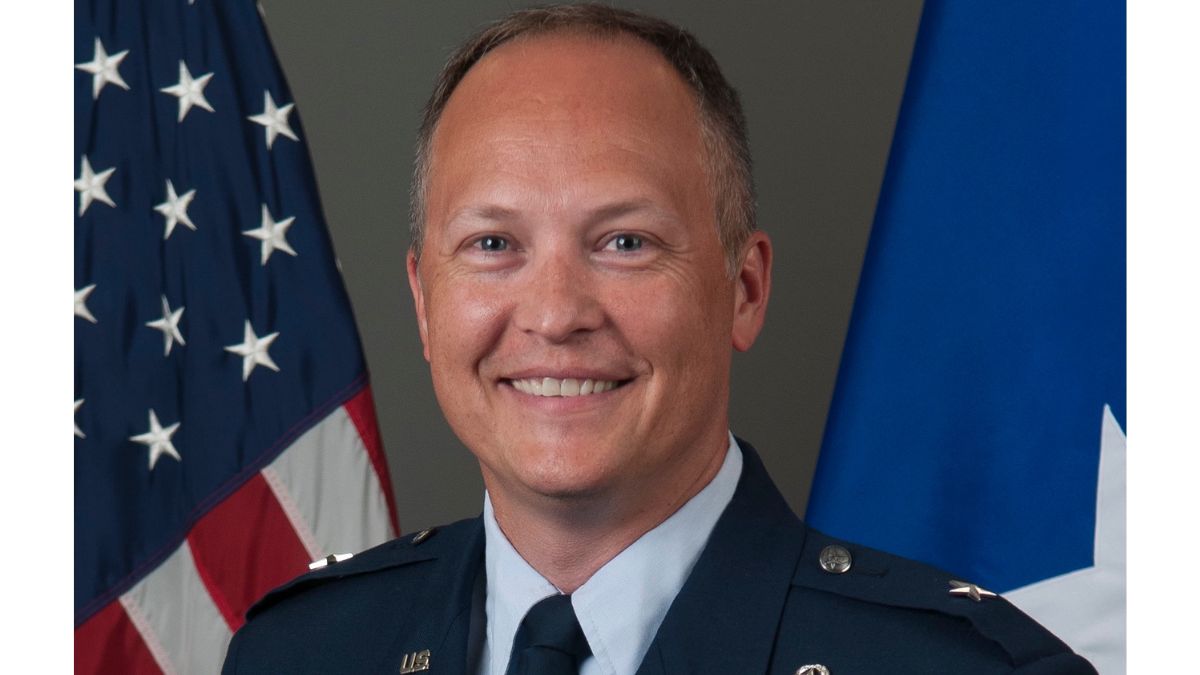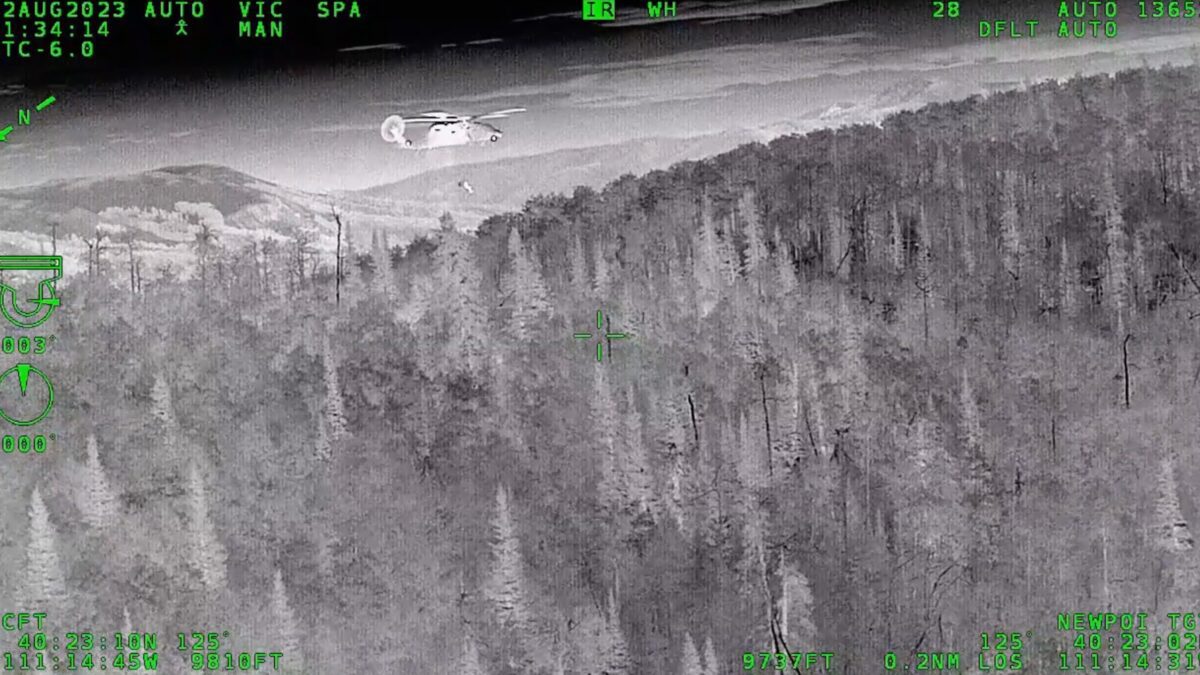Police & Fire
Snowbird Black Hawk crash was the result of pilot error, will cost $9.23 million

Both helicopters received damage to the main rotor blades, tail rotor blades and multiple other components, amounting to about $9.23 million in damage. Photo: Twitter @LifterMike93
SNOWBIRD, Utah — The Utah National Guard is reevaluating landing zones near Snowbird to determine their suitability after a February crash between two Utah National Guard Black Hawk helicopters that caused millions in damage and was attributed to pilot error, according to the Salt Lake Tribune.
Upon enlisting South Carolina National Guard personnel to investigate the crash, they found that as the Black Hawks approached the planned landing zone, the trailing helicopter descended below the lead helicopter, entering white-out conditions as fresh snow was being kicked up from the ground.
The pilot in command of that helicopter then relied on flight instruments to determine his position and land.
However, when the helicopter touched down, it drifted to the right, causing it to roll on its side. The main rotor blades then snapped apart, and one piece struck the lead helicopter, causing a catastrophic mechanical failure of the tail rotor. After completing a full spin, the pilot in command of the lead aircraft was able to safely land.
View this post on Instagram
“Accidents like this rarely happen,” Lt. Col. Jaime Thomas, public affairs officer for the Utah National Guard, said in an email to the Salt Lake Tribune. “Regulatory guidance mandates a safety hazards survey of every landing zone. Utah Army National Guard aviation units minimize risk by identifying hazards and implementing appropriate controls as well as conducting preventative maintenance checks and services during all training missions.”
Investigators were able to determine that an error by the trailing helicopter’s pilot in command is what caused the crash. They also discovered that the actions of the lead helicopter’s commanding pilot were “commendable,” since they were able to land without any serious injuries to any of the crew members in what could’ve been a fatal accident.
Overall, both helicopters received damage to the main rotor blades, tail rotor blades and multiple other components, amounting to about $9.23 million in damage. Due to the extensive damage and age of both Black Hawks, it’s likely they won’t be repaired, but will instead be used in non-flying maintenance training for Army mechanics.
Currently there are no future operations planned for the Mineral Basin landing area. The Utah National Guard is also in the process of re-evaluating all of its helicopter landing zones, to determine how suitable they are for training operations.
















